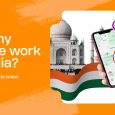Backpacking in India is a lifetime experience. It has something for almost anyone—soaring cities, stunning countryside, ancient temples, and secluded villages. So, if you want to know when it is best to travel, where you should go, and how to do it cheaply, then read on. Prepare yourself to learn more about the beauty and traditions of India!
Table of Contents
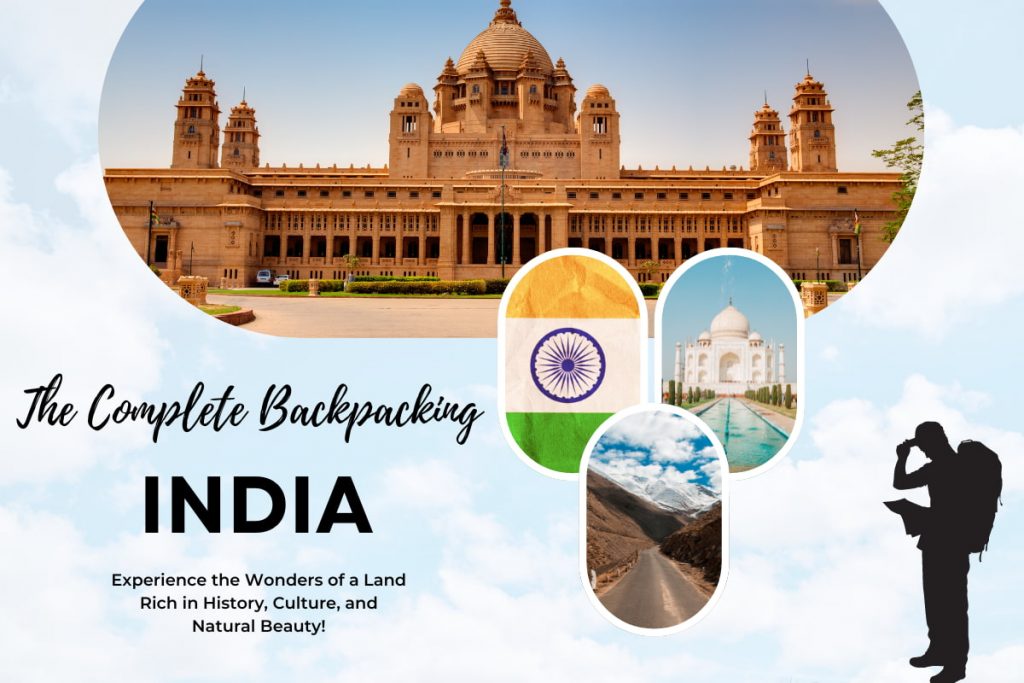
I. Why go backpacking in India?
Backpacking in India is ideal for numerous reasons. It provides a thrilling and cultural experience at a relatively cheap rate. The country is relatively affordable, especially for those interested in traveling, since they can access most of the services within the country at much lower prices than those in other countries.
India has interesting natural terrains ranging from the Himalayan mountains to the beaches of the south. The rich cultural history, cultural festivals, and spiritual experiences are other appeals that enhance the excitement of this site.
You will also be surrounded by friendly people who are willing to help you when you need it. As the number of backpackers increases, India is becoming all the more popular as an inspiring destination for travelers with a purpose.
II. Best time to visit India
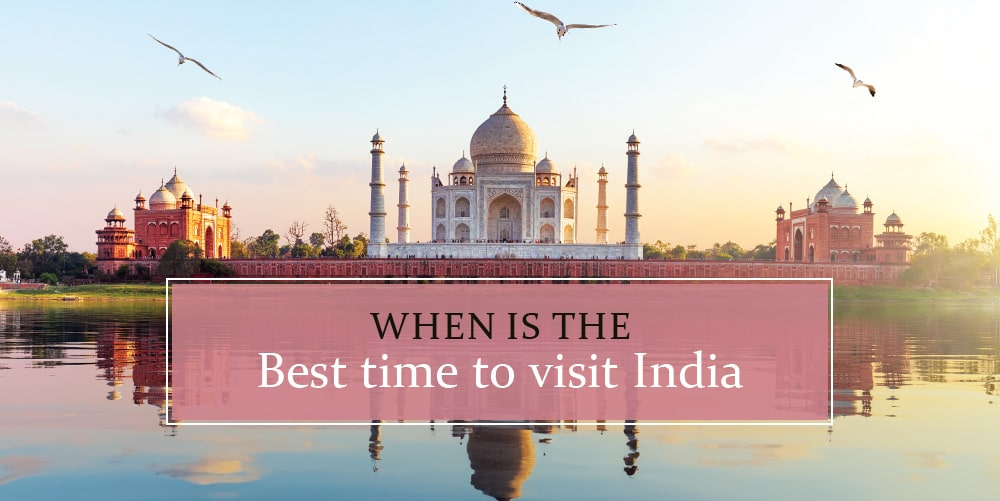
The best time to visit India depends on the region and its weather. Generally, winter from November to March is the best season, with little rain and moderate temperatures in places like Delhi, Agra, and Rajasthan. However, the northern mountains can be icy and hard to navigate due to snow.
Summer lasts from April to June and brings intense heat, especially in central and northern India, with temperatures over 40°C (104°F). This makes sightseeing tough but is great for visiting hill stations or wildlife parks.
The monsoon runs from July to September, bringing heavy rain across the country. While it can disrupt travel plans, it makes the landscape green and is perfect for Ayurveda treatments in Kerala.
III. Best places to visit in India
India has amazing places for backpackers to explore, from famous tourist spots to hidden gems. Whether you want to see its rich history or enjoy its natural beauty, there’s something for everyone. Here are some top places to visit:
1. Must-Visit Destinations
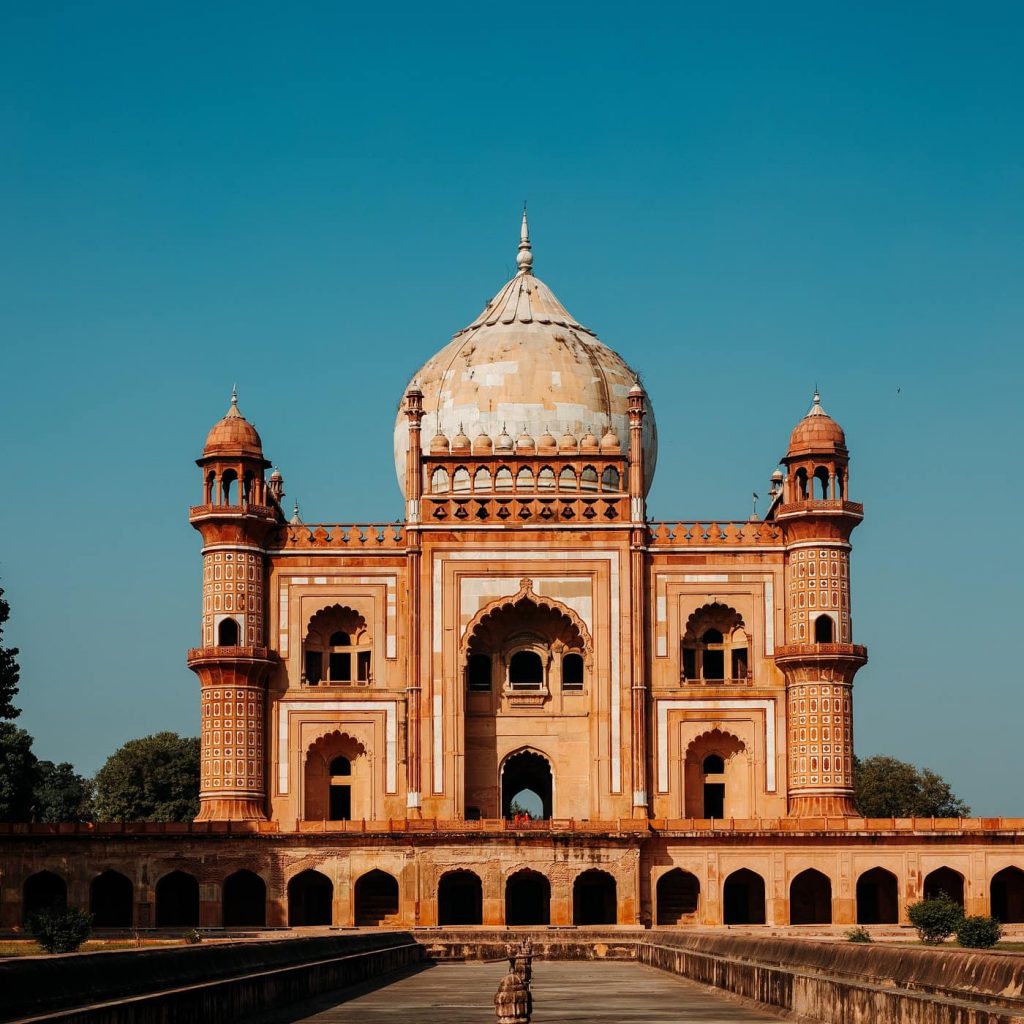
- New Delhi: The capital city mixes old and new, where modern skyscrapers meet ancient monuments. Don’t miss the Red Fort, Qutub Minar, and the India Gate. Explore the bustling markets of Chandni Chowk and sample delicious street food.
- Agra: Home to the Taj Mahal, one of the Seven Wonders of the World, Agra is a must-see for all travelers. Visit the Agra Fort and Fatehpur Sikri to dive deeper into India’s Mughal history.
- Jaipur: Known as the Pink City, Jaipur is full of colorful palaces, vibrant markets, and cultural experiences. Visit Hawa Mahal, and Amber Fort, and stroll through the old city to soak in the architecture and culture.
2. Off-the-Beaten-Path Locations
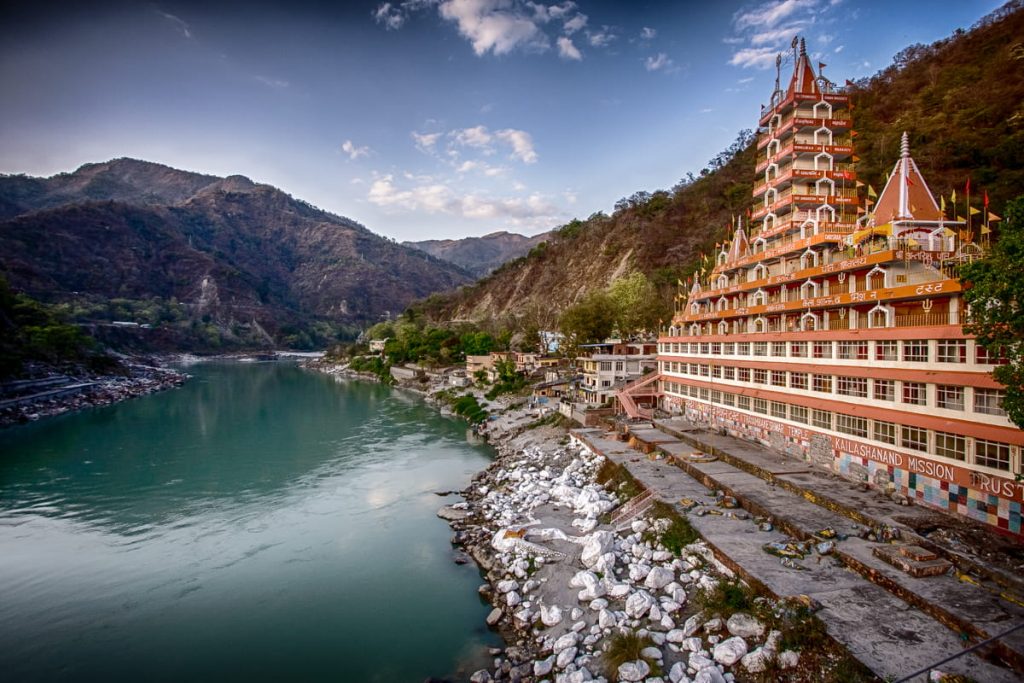
- Rishikesh: Nestled in the foothills of the Himalayas, Rishikesh is a spiritual hub, famous for its yoga retreats and meditation centers. Adventure lovers can also enjoy white-water rafting and trekking in the nearby hills.
- Hampi: A UNESCO World Heritage site, Hampi is a surreal landscape of ancient temples and boulders. It’s a hidden gem, less crowded but rich in history and beauty. Explore the Vijayanagara ruins and enjoy stunning sunset views over the Tungabhadra River.
- Spiti Valley: Located in the Himalayan mountains, Spiti Valley is a remote and breathtaking destination. It’s perfect for those seeking adventure and solitude. Trekking, visiting ancient monasteries, and staying in homestays with locals make this a unique experience.
3. Cultural Attractions
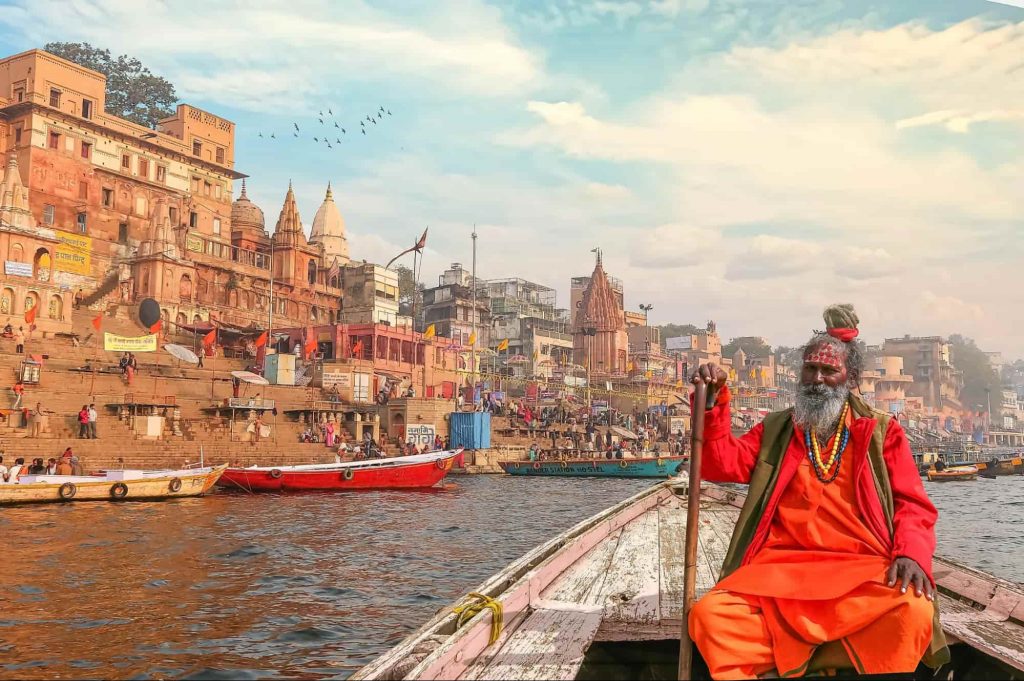
- Varanasi: Considered one of the holiest cities in India, Varanasi is a spiritual experience like no other. Watch the Ganga Aarti ceremony on the banks of the Ganges River and explore the narrow lanes filled with temples and shops.
- Kerala: Known for its tranquil backwaters, Kerala offers a peaceful experience with its houseboat cruises, palm-lined beaches, and rich cultural traditions. Visit the Periyar Wildlife Sanctuary to see elephants in their natural habitat.
Backpackers heading to India will discover plenty of spots full of adventure and cultural experiences, making it a diverse and exciting place to explore.
IV. Top 5 things to do in India
If you’re backpacking through India, countless unique experiences will leave you in awe. Check out these 5 awesome activities that will make your trip unforgettable:
1. Visit the Taj Mahal in Agra
The Taj Mahal is a must-see when you visit India. It is one of the Seven Wonders of the World, known for its beautiful marble and detailed designs. Try to go early in the morning to enjoy the Taj Mahal without large crowds and to see its beauty as the sun rises.
2. Explore the Ghats of Varanasi
Varanasi is one of the most sacred cities in India. The Ghats by the River Ganges are places where people do rituals, take baths, and bury their loved ones. They offer a deep cultural experience. You should try to visit during sunrise to see the daily prayers and the lively atmosphere by the river.
3. Adventure in Rishikesh
Rishikesh, often called the “Yoga Capital of the World,” is a unique place to enjoy spiritual experiences and exciting activities like white-water rafting and bungee jumping. It’s also where the famous Beatles Ashram is located. A great tip is to attend the evening Ganga Aarti ceremony, which offers a calm and beautiful experience.
4. Trek Through the Mountains in Dharamshala
Dharamshala, located in the Himalayas, is special because of its rich Tibetan culture and beautiful views. It’s the home of the Dalai Lama and offers peaceful trekking experiences and lovely landscapes. If you visit, take some time to explore the lush valleys or check out the Tibetan monasteries.
5. Experience the Desert in Jaisalmer
Jaisalmer, known as the “Golden City,” is special for its impressive fort and the wide Thar Desert. You can spend nights camping under the stars and enjoy camel safaris across the dunes. Make sure to experience a night in the desert; seeing the clear night sky surrounded by dunes is a truly magical experience.
V. Best accommodations for backpackers in India
India has many budget-friendly places to stay for backpackers, from lively hostels to cozy guesthouses. These spots offer comfort, safety, and a chance to meet other travelers. Here are some great options for you:
1. Zostel (Multiple Locations)
- Overview: Zostel is India’s largest and most well-known chain of backpacker hostels. With properties in cities like Delhi, Jaipur, and Manali, it offers clean, comfortable dorms and private rooms.
- Why It’s Great: The social atmosphere, free Wi-Fi, and organized tours are highlights. It’s a perfect place to meet other travelers.
- Price: Starting at INR 400 per night (~ $4.7).
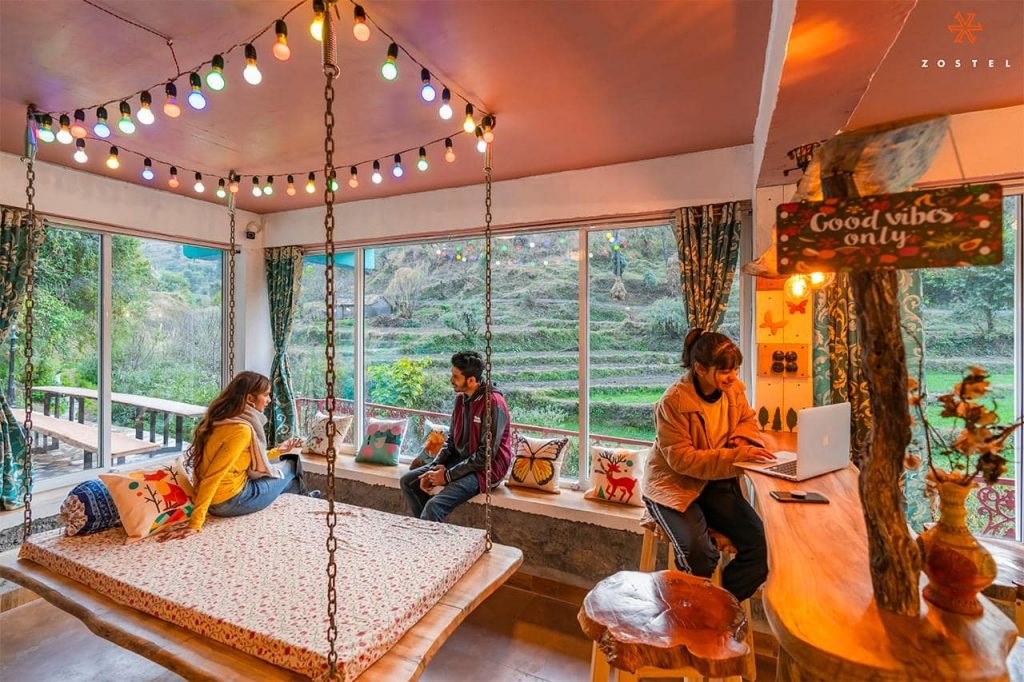
2. The Madpackers Hostel (Delhi)
- Overview: Located in Delhi, The Madpackers Hostel is popular for its youthful vibe. It offers clean dorms and a rooftop terrace with city views.
- Why It’s Great: Known for its social environment and helpful staff, it’s ideal for solo backpackers looking to make friends in India’s bustling capital.
- Price: Starts around INR 400 per night (~ $4.7).

3. Moustache Hostel (Jaipur)
- Overview: Moustache Hostel is a stylish, modern hostel in the heart of Jaipur. It offers both private and dormitory accommodations.
- Why It’s Great: The rooftop café with city views and the on-site restaurant make it a perfect spot for backpackers wanting to relax after exploring the Pink City.
- Price: Starting at INR 350 per night (~ $4.1).
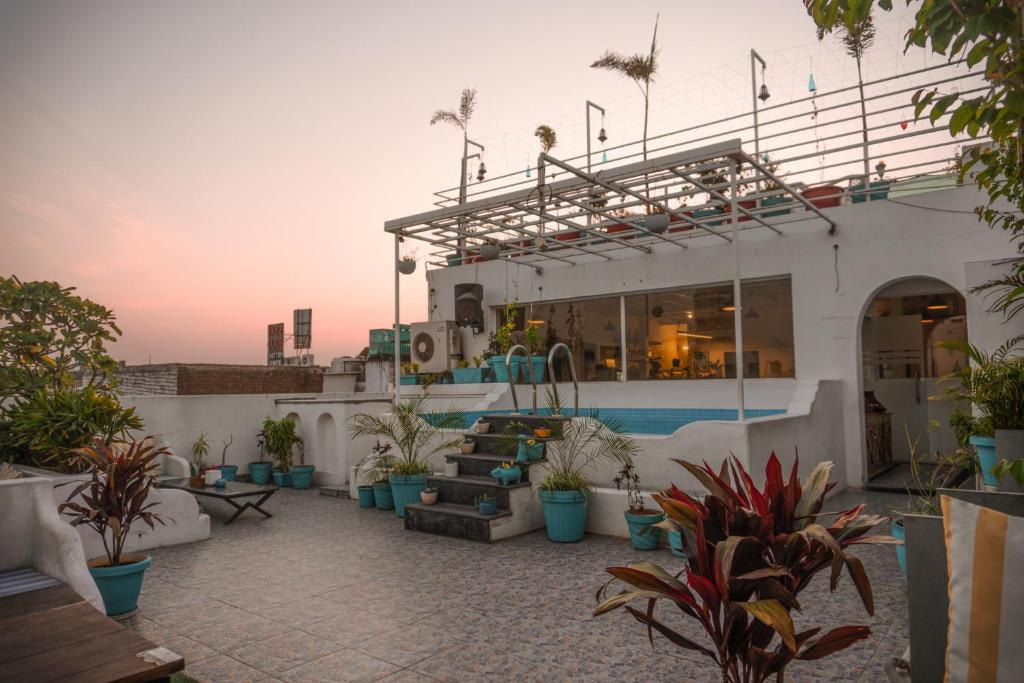
4. Live Free Hostel (Rishikesh)
- Overview: Set in the serene town of Rishikesh, Live Free Hostel offers dorms surrounded by mountains. It’s a haven for those interested in yoga, meditation, and adventure activities.
- Why It’s Great: The hostel provides daily yoga sessions and an excellent environment for travelers seeking peace and spirituality.
- Price: From INR 500 per night (~ $6).
VI. India backpacking costs
| Category | Estimated Cost (INR/USD) | Details |
| Accommodation | INR 300-700/night ($4-10) | Dorm beds in hostels cost around INR 300-600 ($4-8). Depending on the city, budget guesthouses or private rooms may range from INR 500-1300 ($7-20). |
| Food | INR 50-250/meal ($1-4) | Street food can cost as little as INR 50-150 ($1-2). A meal at a mid-range restaurant is about INR 250-500 ($3-6). |
| Transportation | INR 100-800 ($1-10) | Local transport like rickshaws or buses cost INR 100-500 ($1-7). Train rides can range from INR 200-800 ($3-10), depending on distance and class. |
| Activities | INR 200-1000 ($3-15) per site | Entry to monuments like the Taj Mahal costs INR 1000 ($15), while other sites range from INR 200-750 ($3-10). |
| Daily Budget | INR 1000-1500/day ($14-20) | This budget covers accommodation, food, transport, and basic sightseeing. |
Tips for Budgeting:
- Accommodation: Hostels like Zostel or Madpackers offer cheap beds and a chance to meet other travelers. Couples might prefer private rooms in budget guesthouses.
- Transport: Train travel is cheap and authentic. To save money, take sleeper classes for long trips.
- Food: Eat at local places (dhabas) or try street food, which is tasty and affordable. Skip pricey restaurants to stay on budget.
- Activities: Entry fees for historical sites can add up. Plan and focus on must-see spots, which charge more for international tourists.
VII. How to stay connected in India
Several great options exist for getting reliable internet and data during your trip to India.
1. Internet Options
- Public Wi-Fi: It’s easy to use in hotels, cafes, and airports, but speeds can change. Avoid using it for sensitive tasks like banking.
- Portable Wi-Fi Hotspots: These let you connect several devices at once, great for groups. You can rent them online or at big airports. Companies like Rent ‘n Connect provide Wi-Fi devices for travelers.
2. SIM Cards
Backpackers might find getting a local SIM card in India takes time because of registration rules. An International SIM card is a better option; it immediately gives you data access.
Costs: ~$20 and $50 based on data amount and time.
3. eSIM (Embedded SIM)
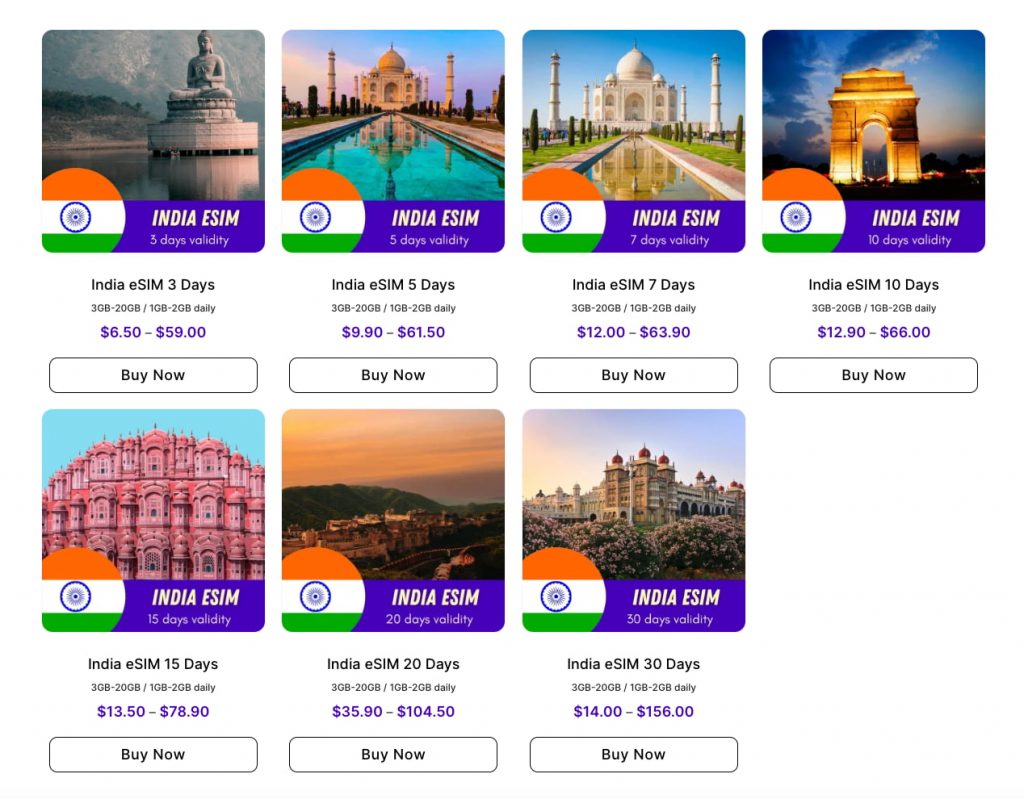
For a hassle-free option, you can go with an eSIM. It doesn’t need a physical card and can be activated online, which is super convenient for those with eSIM-compatible devices. Plus, it saves you the trouble of hunting down a local SIM vendor.
One of the best local providers of eSIM in India is esimindia.net. They offer a range of affordable plans for tourists. Here’s a quick breakdown:
- Plan Options: Starting from 3GB for 3 days to 20GB for 30 days.
- Price Range: $6.50 to $156, depending on your chosen data and validity.
Visit esimindia.net to browse their plans and activate your eSIM instantly for smooth connectivity throughout India.
4. Portable Wi-Fi Hotspots
If you’re traveling with a group or need to connect several devices at once, renting a portable Wi-Fi hotspot is a great option. These hotspots offer decent internet speeds and can easily be shared among multiple devices.
VIII. FAQS about backpacking in India
Is India safe for solo backpackers?
India can be safe for solo backpackers if you know your surroundings. Use common sense, such as avoiding isolated areas at night, using verified accommodation, and staying connected with family and friends.
What are the best modes of transportation for backpackers?
India has a well-connected train network makes it a budget-friendly way to explore the country. Buses, rickshaws, and metros in major cities are also affordable and convenient.
Do I need a visa to backpack in India?
Yes, most travelers need a visa to enter India. You can apply for an e-visa online, which is available for tourists from many countries. The e-visa is usually valid for 30 to 90 days.
What should I pack for backpacking in India?
Essential items include comfortable clothing, a reusable water bottle, travel adapters, a first aid kit, and lightweight walking shoes. When visiting religious sites, be sure to bring modest attire.
IX. Final advice before visiting India
Backpacking in India is a fun mix of culture, adventure, and beauty, but you must be ready. Pack light and bring comfy clothes, strong shoes, and basic medical supplies. Keep your plans flexible, as India is full of surprises. Stay aware of your surroundings, especially in busy places, and enjoy local customs. Stay open-minded – India will surprise you and give you unforgettable experiences!

